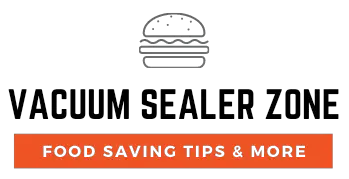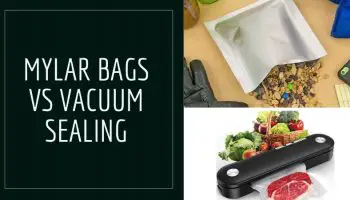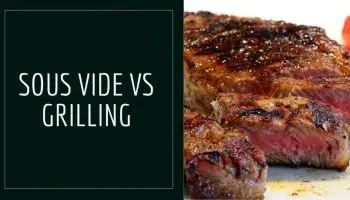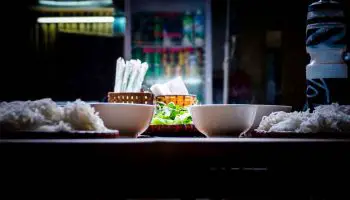Food preservation is something that has become more advanced over the years. From traditional methods like drying and salting to modern methods like canning and pasteurization.
There are a lot of ways that you can preserve your food and each method will differ from the other. Some preserve food longer, others need a lot of work to be able to preserve, while with others you cannot be sure whether your preserved food will go bad or not.
Vacuum sealing and canning are two relatively modern ways that have gained a lot of popularity in many kitchens for domestic settings and commercial settings.
Both methods involve sealing of food in containers which may bring about confusion as people think that they are the same thing. However, they are different in their preservation processes.
Let’s look at how each one differentiates from the other.
Canning
Introduced in the 1800s, canning has evolved a lot since then. The process involves the heating of foods to kill all microorganisms that bring about food spoilage.
You first put your food in tins or cans, then place them in hot water where they will undergo high temperatures. This process sterilizes food by killing all microbes.
The high temperatures make the food to expand, filling up the containers, which removes air. Sometimes people add liquids like syrups to the food to take up the space of air.
When all air has come out, you then seal the containers tightly and the process of canning is complete. You can apply canning to a wide variety of foods like meat, poultry, seafood, jams, pickles, tomatoes, and fruits.
However, canning does not work for some foods. These include dairy, grains, and even some vegetables like broccoli.
Vacuum Sealing
Vacuum sealing is not exactly a 21st-century new kid but when compared to canning, it’s more modern. Karl Busch, a German inventor, introduced vacuum sealers in the 1940s.
Chefs use the process in commercial settings like restaurants and in home kitchens too. There are small vacuum sealers for home use and bigger commercial chamber vacuum sealers that can seal in bulk.
The process involves removing all air from a package. This kills bacteria because it cannot survive without oxygen.
However, anaerobic bacteria can survive without oxygen and the food may still be at risk of it. You will require high hygiene to make ensure you do not contaminate the food as you package it.
You can put foods in packages or bags. There are special vacuum sealing bags but you can still use Ziploc bags.
Place the packed bag in a vacuum sealer machine. The machine removes all air from the package before sealing it which is why it’s called a ‘vacuum sealer’.
This process only gets rid of air to prevent the growth of bacteria. So to make sure that the food lasts longer you will need to refrigerate it.
Comparisons of Canning and Vacuum Sealing
Now that we have looked at how each process works, let’s compare them to see which one would be best for you.
Re-using
Both processes are economical for users when it comes to packaging. The canning containers and vacuum sealing packaging are affordable because you can reuse them.
However, each one of them has a downside. You can only reuse the jars and not the lids for canning.
The lids are only suitable for one use. A reused lid may make food unsafe by not closing properly with the jar. This will require a new lid for each time you can.
On the other hand, you cannot reuse all packaging bags for vacuum sealing. You should throw away bags that had meats and oily foods because washing may not get rid of all bacteria.
This, in turn, requires you to buy new bags.
Refrigeration
When it comes to canning, the process is complete on its own. After heating and packaging you can put the jars anywhere you want making them suitable for long-distance travel too.
Actually, this was why Nicolas Appert of France invented this technique. The French government needed a cheap preservation method for its army and military. Canned food is easy to store while lasting a very long period.
For vacuum sealing, however, you will need to refrigerate the sealed packages to increase their longevity. Vacuum sealing will allow the growth of bacteria if not refrigerated which will make food go bad fast.
This makes it a requirement for you to refrigerate vacuum-sealed packages to make them last longer.
Shelf Life
Canned foods can stay longer than vacuum-sealed foods. For instance, meat can last for up to 5 years when canned while meat will last for up to 3 years when vacuum sealed.
But there is a big difference in the food structure. When you vacuum seal foods, you preserve them while in their original form.
They do not lose moisture or nutrients. This ensures that they keep all their properties for the whole period that you store them.
This means that even after two years, the food will still have the same flavor and texture that you kept it with.
When canned, the food tends to deteriorate with time. Canned foods usually change color, taste, and even texture.
Packaging
Vacuum sealing is a very easy process and it is fast to do in most kitchens. All you need to do is package and vacuum seal in minutes.
But there is still the requirement of a vacuum sealer machine. Canning can take a while as you package and heat to kill microorganisms.
Vacuum sealing is also easier for small food batches like extra garden produce or food leftovers while canning is best for larger batches.
Space
After packaging vacuum-sealed bags, you will need to put them in the refrigerator. This will require space.
The more bags you have, the more space that you will use up and this can become inconvenient for you.
You can simply put canned tins on shelves or cabinets.
Recap
So there you have it. The actual processes of both canning and vacuum sealing along with their pros and cons.
Each method is different and both methods are convenient for food preservation. You just have to pick the one that best works for you and the food that you are storing.
Happy food preserving!



